We’ve all heard industry veterans say auto upholstery is an old, slow-changing craft. But these photographs we dug up at the Library of Congress really illustrate the point.
The pictures were shot in May 1942 by photographer John Collier. They depict an unnamed trimmer working at Martin Auto Body, an automotive shop in Arlington, Virginia, that specialized in both body and upholstery work.
The only thing known about the trimmer is that he’s a “skilled craftsman who learned his trade in the horse and buggy days.”
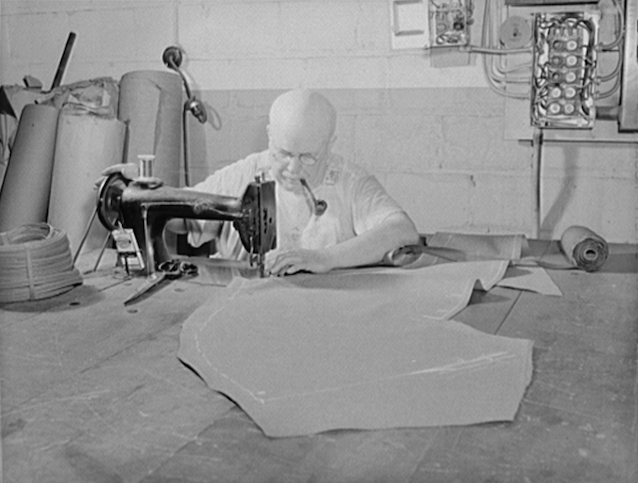
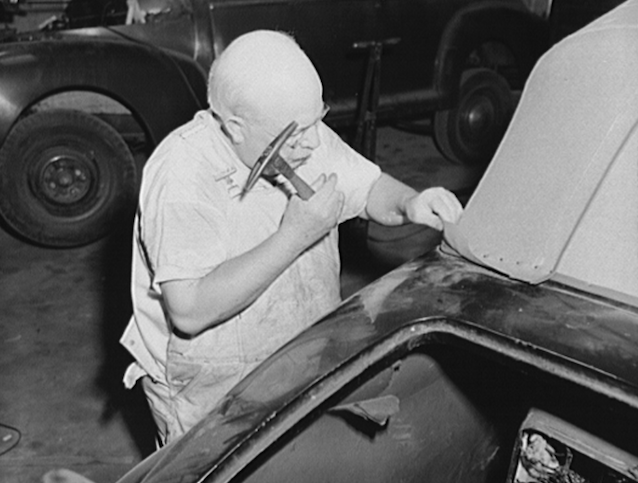
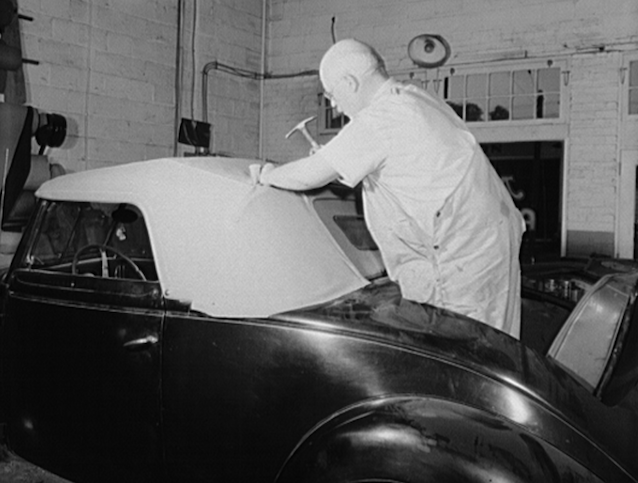
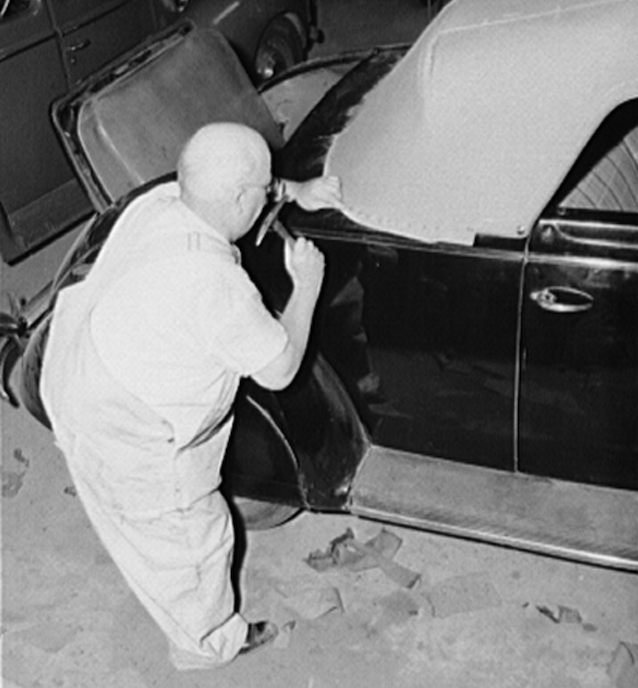
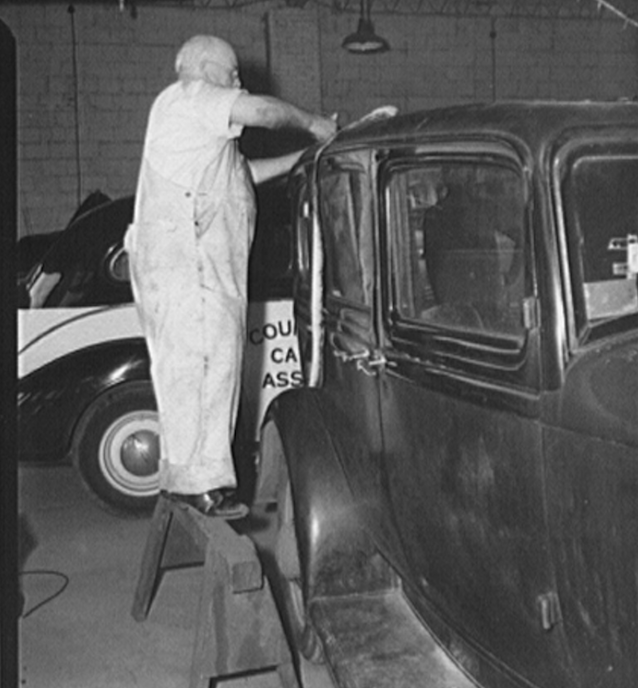
The photos are 75 years old, but the tools, supplies and techniques shown can still be seen today in auto upholstery shops across the world — proof that our craft has a long and storied history.
To see more old school photos, check out The Hog Ring’s “Industry History” section.
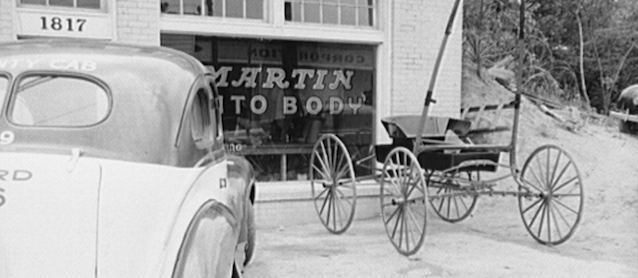
This was the generation of trimmer that I learned from. They apprenticed for five to seven years before they thought they were ready to be called a trimmer. They truly knew their craft.
Right on Fred!
It’s almost unbelievable to read that the trimmer in these photos started his career in the “horse and buggy days,” but it makes sense.
If he’s 60 in these photos, that means he was born in 1882. The Model T didn’t hit the streets until he was 26 years old! So yeah, he had to have been trimming horse carriages. Amazing!
So how far back does the upholstery trade go? I suppose the first person to throw an animal fur on a rock. As for auto upholstery, records of Chinese shoulder-carried palanquins go as far back as 2000 BC. Yes, we are part of one of the world’s oldest trades, and we should be proud of that. Thanks for reminding everybody.
Two observations: One thing you don’t see clearly, but many of us old guys know is that the guy in the photo has a mouth full of blued-tacks. That’s how they held down the fabric in one hand and a tack hammer in the other. Miners had black lung, trimmers had blue tongue.
Finally, you said you found these photos at the LOC. Did you physically go there and browse the stacks, or is there a way to search online?
Thanks again for the great historical perspective on our trade.
Hey Jim! Interestingly, when we went there in person, we couldn’t find much. But online, we found this treasure trove. You can browse their online collection here: http://www.loc.gov